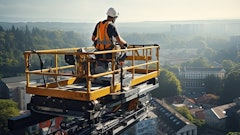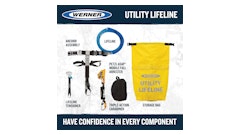
In 2021, the construction industry reported the highest number of fatal work injuries in the private sector—many of which resulted from preventable accidents. The key to preventing these accidents is knowing how to operate heavy equipment and following safety protocols at all times on the job.
Take a look at this guide to better understand what causes workplace accidents and how to prevent them.
Top 5 Dangers of Working With Heavy Equipment
- Operating Machinery With No Guards in Place
Machine guards are placed over potentially hazardous components of heavy machinery to prevent workers from getting injured. Some heavy equipment operators don’t know how to properly check the guards, while others remove them to eliminate any project slowdowns. Unfortunately, both of these scenarios put workers at greater risk of sustaining injuries on the job.
You should always place guards on heavy machinery and know how to ensure they’re working properly to minimize workplace injuries.
- Getting Crushed or Run Over
Machinery used on construction sites is large, heavy, and extremely powerful. When equipment malfunctions or is used improperly, mistakes are more likely to occur—like workers getting crushed or run over by it.
That’s just one reason why proper training and constant awareness of your surroundings are essential to ensuring workplace safety in the industry.
- Involvement in Equipment Transport Accidents
Heavy equipment must be moved between locations at the beginning and end of a construction project. Accidents can occur in transit due to factors like unsecured equipment, reckless driving, and poor weather conditions.
You must ensure the equipment is well-balanced on the trailer bed and adequately strapped down. Know your route ahead of time, and avoid narrow and windy roads, tall bridges, and short underpasses at all costs.
- Not Knowing the Risks Associated With Heavy Machinery
It’s no secret that heavy machinery poses inherent risks to construction workers. Many contractors don’t have comprehensive risk assessment and prevention programs in place, which puts workers at greater risk of causing accidents and sustaining injuries on the job.
While you can’t avoid these risks completely, you should take all available steps to minimize them. That starts with putting the proper systems in place to educate heavy equipment operators about the risks associated with the heavy machinery they’ll use.
- Using Equipment Without Proper Training
Operating heavy machinery without proper training is the worst thing you could do as a heavy equipment operator. If you don’t know how to handle the equipment you’re using, you risk damaging equipment and harming yourself and fellow workers.
Training requirements vary by state, so pay attention to job descriptions when applying for positions as a heavy equipment operator. The moment you step foot on a piece of heavy machinery, you bear responsibility for the safety of everyone involved in the construction project.
6 Most Common Causes of Accidents
- Lack of Training & Safety Hazard Awareness
Operators don’t know how to perform safety checks, operate the equipment properly, and avoid common hazards.
- Machine Weight
The average piece of heavy machinery weighs a minimum of 5,000 pounds. When this amount of weight falls on a person, the results are often fatal.
- Excessive Noise
Excessive worksite noise is distracting to the operator and other workers involved, which causes more accidents.
- Lack of Experience
Construction workers who have been on the job for less than a year are more likely to cause an accident because they’re still learning how to operate equipment in real-life scenarios.
- Lack of PPE
Not wearing personal protective equipment (PPE)—including a hard hat, safety glasses, work boots, gloves, and a safety vest—can result in serious injuries or even death.
- Failure to Follow Proper Safety Protocols
Safety protocols and hazard communications—like using hand signals—are in place for a reason: to protect workers and bystanders from sustaining avoidable injuries. Failing to abide by them puts workers at greater risk of causing an accident.
5 Most Dangerous Types of Heavy Machinery
While any piece of heavy construction equipment can cause a workplace accident, some are more likely to than others. Knowing which equipment pieces cause the most accidents helps heavy equipment operators receive adequate safety training so they can minimize risks.
- Ladders
According to the Occupational Safety & Health Administration (OSHA), ladders are one of the leading causes of death in the construction industry due to their high likelihood of causing falls.
- Bulldozers
Bulldozers are one of the heaviest pieces of equipment on a construction site. They’ve been known to strike, crush, and roll over workers.
- Power Saws
Power saws have been involved in a growing number of construction site accidents. Due to their sharp blades and enhanced power, they’re likely to cause severe injuries.
- Backhoes
With a shovel on the front end and a bucket on the back end, backhoes pose risks on both sides. Common accidents involving backhoes include workers being struck by, run over by, or trapped under the equipment.
- Cranes
Cranes are tall, heavy, and more difficult to balance during operation. As a result, they’re more likely to strike workers, collapse, and cause electrocutions.
Most Common Heavy Equipment Accidents
According to OSHA, the following injuries—called the Fatal Four—constitute the majority of annual construction site injuries.
- Falls
Falls are the leading type of heavy equipment-related accident. This includes cases of workers falling from a ladder or piece of heavy machinery along with cases of the equipment falling on workers.
- Getting Caught in or Between Pieces of Equipment
Workers can be crushed by, trapped by, and even caught between pieces of heavy machinery.
- Struck-By Accidents
These include a piece of heavy equipment running into a worker or otherwise hitting them on some part of the body.
- Electrocution
Many construction projects take place either near or directly beneath power lines. If these power lines come in contact with heavy equipment—which is often made with some type of metal—the operator can be electrocuted.
When Most Heavy Machinery Accidents Occur
While you can’t predict when a heavy equipment-related accident will occur, you can—and should—be aware of particular actions that are most likely to cause an accident. Below are five points during the operation process in which accidents are most likely to occur.
- Backing up the equipment
- Loading and unloading
- Working on uneven surfaces
- Getting on or off a vehicle
- Operating near power lines
Common Injuries Caused by Heavy Construction Equipment Accidents
Injuries often associated with heavy equipment accidents on construction sites include the following:
- Fractured and broken bones
- Traumatic brain injuries (TBIs)
- Amputation
- Back sprains
- Blunt force trauma
- Burns, scarring, and disfigurement
- Herniated disks
- Soft tissue damage
- Spinal cord damage
5 Hazard Controls in the Workplace
Here’s a breakdown of the five hazard controls used in the construction industry.
1. Personal Protective Equipment
PPE helps workers avoid common workplace hazards. Most employers require you to wear a hard hat, safety vest, safety glasses, work boots, and gloves.
2. Administrative Controls
These include protocols that leadership members implement to ensure proper equipment operation and worker safety.
3. Engineering Controls
These include building designs and workplace modifications that limit employees’ exposure to known hazards.
4. Substitution
If faulty equipment is a hazard on the job site, it is replaced with properly functioning equipment.
5. Elimination
Any hazards that can be eliminated entirely should be removed from the workplace.
Whether you want to operate a crane, a bulldozer, or another piece of machinery, Heavy Equipment Colleges of America (HEC) will teach you how to do it the right way. We offer heavy equipment training programs that equip students for success in the construction industry. Instruction includes risk mitigation and safety protocols that enhance the safety of construction sites nationwide.

























